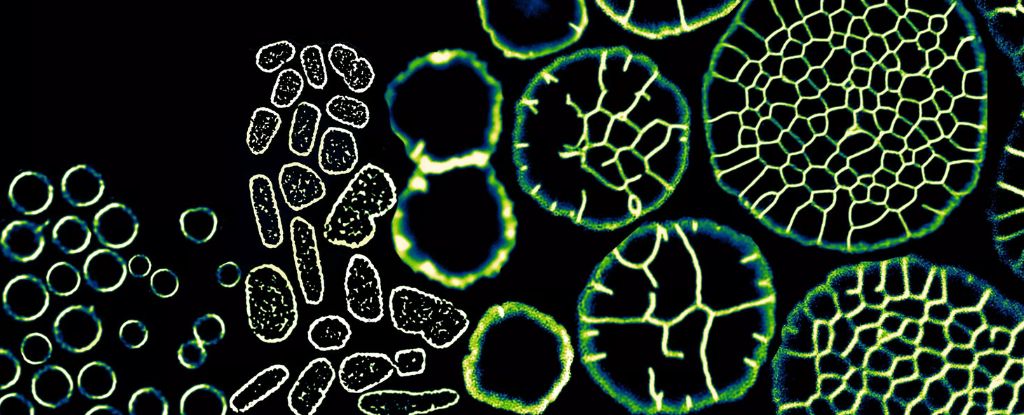A rare carnivorous caterpillar in Hawaii gets its food from spider webs, adorns body with uneaten insect parts
This paper in Science (click screenshot to read) describes a very unusual Hawaiian caterpillar (the larva of a moth): it is very rare, found only in a 15 km² area of Oahu, patrols spider webs on the ground for its prey, and then affixes the uneaten parts of insects to its body, so it looks … Continue reading A rare carnivorous caterpillar in Hawaii gets its food from spider webs, adorns body with uneaten insect parts

This paper in Science (click screenshot to read) describes a very unusual Hawaiian caterpillar (the larva of a moth): it is very rare, found only in a 15 km² area of Oahu, patrols spider webs on the ground for its prey, and then affixes the uneaten parts of insects to its body, so it looks really weird. Its rarity in both number of individuals and habits (almost no caterpillars are carnivores) makes it imperative to save the small area of its habitat, which, to use non-metric measures, is about an area the size of a square 2.4 miles on a side.
You can also see a writeup of this weird insect in the Smithsonian, from which I’ve taken a few photos that come from Daniel Rubinoff, the study’s first author of the Science paper. Click below to go to the Smithsonian article:
The caterpillar has the ghoulish name of the “bone collector caterpillar”, and its species, not yet named, is in the genus Hyposmocoma, a genus endemic to Hawaii that has radiated into over 350 species on the archipelago. Here’s the adult of this species, which is also rare because only 62 species of its caterpillar have ever been found. Photo is by Daniel Rubinoff, a Professor of Entomology at the University of Hawaii.

But the weirdest life stage is the larva or caterpillar, which spins a silken web around itself that it carries with it, affixing insect parts to the silk after it crawls around spider webs eating dead or trapped insects. Look at this (photo from the paper). You can’t even see the caterpillar, as it’s covered with scavenged body parts.
This part of the Science paper tell you how it does this, and suggests a reason:
When decorating their silken portable cases, the caterpillars are particular. Body parts are carefully measured for size before the caterpillar weaves them into its collection. Each prospective new addition is rotated and probed with its mandibles several times, and parts that are too large are chewed down to a size that will fit its case. If denied access to arthropod body parts in captivity, the caterpillars do not accept other bits of detritus, suggesting that they recognize and exclusively use corpses in nature and that this decoration is important to their survival. Given the context, it is possible that the array of partially consumed body parts and shed spider skins covering the case forms effective camouflage from a spider landlord; the caterpillars have never been found predated by spiders or wrapped in spider silk. Bone collector caterpillars have been recorded from the webs of at least four different species of spider in three different families, none of which is native to Hawaii, so adaptability to non-native elements is likely crucial to their persistence.
So it seems to be camouflage, as spiders have not been reported to go after these things, even though they hang around webs for a long time (they do move from ground web to ground web). But this is just a guess at this point. It could also be protecting the caterpillar from other predators as well.
Here’s a bone collector caterpillar in a spider web along with a spider and its eggs; I’ve circled the caterpillar, which, as the one above, is covered with insect body parts:

As I said, this genus has radiated widely, and the authors did a molecular phylogeny of the group, showing that it’s most closely related to the cigar caterpillar:

Although the paper says this: “The bone collector species is the only one known of its kind, representing a monotypic lineage without a sister species. Although it is related to the other carnivorous lineage of Hyposmocoma, their ancestors diverged more than 5 million years ago.” But the phylogeny clearly shows a sister species, the cigar caterpillar, so I’m a bit puzzled, unless “cigar” represents itself a whole group of caterpillars, in which case the bone collector is the sister species to this group.
Since Oahu is only 3-4 million years old, the bone collector’s ancestor must have evolved on another island and then the adult (probably) made its way to the younger island to continue its evolution there.
Just two more show-and-tells. First, from the Smithsonian article, a series of bone-collector caterpillars. Since they adorn themselves with whatever is suitable in a spider nest, each individual will look different from the others:

And here’s a video of a bone-collector caterpillar, again taken by Daniel Rubinoff. It’s not clear to me whether it’s eating another member of its species (they are cannibalistic) or is chewing up insect parts with which to adorn itself. But you can get a glimpse of the caterpillar’s head.
Just think about how many bizarre creatures there are like this yet to be found. Another reason to save as much natural habitat as we can.




















_Brian_Jackson_Alamy.jpg?width=1280&auto=webp&quality=80&disable=upscale#)


























































